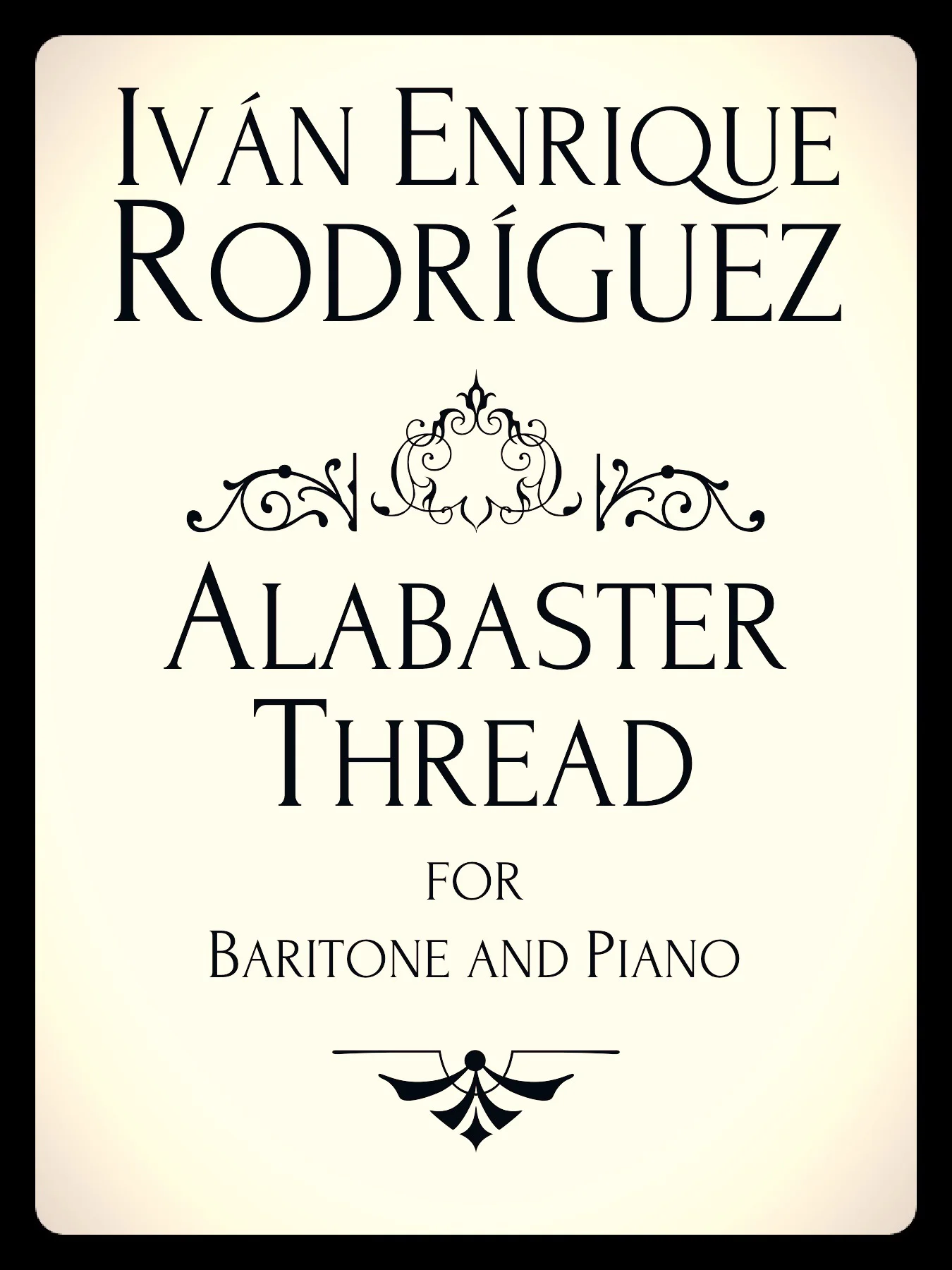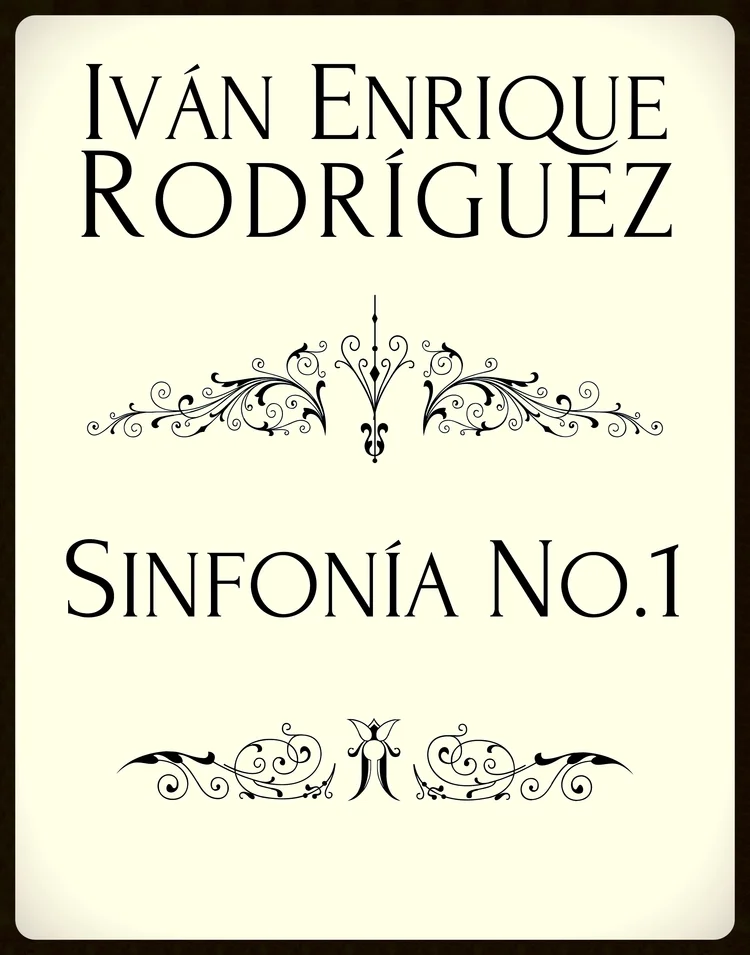Art Song
Alabaster Thread (2018)
for Baritone and Piano and optional brass choir
approx. duration: 7’ 00”
With the rise, or rather furtherance of the racial disparities in the United States of America, many questions ascend concerning the position of the culturally and/or historically privileged class in relation to its counterpart. History, having made an indelible mark in society, urges the privileged class to a fundamental introspection. Alabaster Thread, an art song for Baritone and Piano (with optional brass chorus), aims to describe the turbulent journey of a sincere alliance between a member of the privileged class with the historically unprivileged. The song depicts an unsettled self-examining expedition of awareness and acknowledgment concluding with the acceptance of duty and pact to equality.
Alabaster Thread is dedicated to the baritone Gregory Feldmann, an edified and aware human being, an ally, and moving and passionate musician, but most importantly, a friend.
premiere: Alabaster Thread received its premiere in 2018 by Gregory Feldmann (Baritone) and Nathaniel LaNasa (Piano) at The Juilliard School in New York City, NY.
¡Oh Mar, no Esperes Más! (2018)
for Mezzo-soprano and Piano
approx. duration: 7’ 30”
¡Oh Mar, no Esperes Más! (Oh Sea, Wait no Longer) is an art song with text by the eponymous poem by Julia de Burgos. Composed for the mezzo-soprano Myka Murphy, the piece depicts the inner struggles of a woman that, after confronting betrayal, abuse and despair, finds herself inviting the sea to take her life to, finally, grant her peace and rest.
premiere: ¡Oh Mar, no Esperes Más! received its premiere in 2019 by Myka Murphy (Mezzo-soprano) and Richard Fu (Piano) at The Juilliard School in New York City, NY.
Poema para las Lágrimas (2016)
for 2 Sopranos, Mezzo-soprano, Violin and Piano
approx. duration: 9’ 30”
Poema para las Lágrimas (Poem for the Tears) is an art song for trio of voices with text of the eponymous poem by Julia de Burgos. This art song takes as a primary perspective the emotional journey of Julia de Burgos’ life as a palette to paint a musical interpretation of the poem.
premiere: Poema para las Lágrimas has not yet had a public premiere.
Si Yo Fuera Adán (2011)
for voice, flute, cello and piano or voice and piano
approx. duration: 6’ 30”
Si Yo Fuera Adán (If I were Adam) is an art song with descriptive musical textures based on the eponymous poem by Puerto Rican poet Pedro Luis Rivera.
premiere: Si Yo Fuera Adán received its premiere in 2013 by Erika Mussner in the Jesús María Sanromá Symphony Hall in the Puerto Rico Music Conservatory.
Choir
Blessed be! (2016)
for mixed choir and piano
approx. duration: 4’ 00”
Blessed be! is a simple prayer of gratitude. This piece is composed in evoking a traditional hymn as it was written for and dedicated to Johan and Marie Bosman who invited Rodríguez to their home to stay during the summer of 2016.
premiere: Blessed be! has not yet had a public premiere.
Each order is printed on demand and price is determined by printing order.
SATB and Piano score in 8 ½ x 11 paper.
Madre Luna (2014)
for SSAA or children choir
First place award by the Rimini International Choral Competition
approx. duration: 4’ 00”
Madre Luna (Mother Moon) is a piece in the form of a prayer to the Moon. The music portrays the process of the prayer from the invoking process through the petition, acceptance and thankfulness.
premiere: Madre Luna received its premiere in 2014 by the San Juan Children’s Choir in the Theatre Novelli in Rimini, Italy.
Anamnesis Luctuoso (2014)
for Soprano solo and SSAATTB Choir
approx. duration: 5’ 30”
Anamnesis: Greek ἀνάμνησις, anamnesis, recollection or reminiscence. In the Orphic and Pythagorean tradition is linked tometempsychosis or transmigration of souls, appointing in this case the memory of past lives.
Plato introduces this concept in the Meno, which keeps mentioning in the Phaedo, and Phaedrus. This theory suggests that the soul is immortal, and repeatedly reincarnated, therefore knowledge actually is in the soul from eternity, but every time the soul is incarnated its knowledge is forgotten in the birth trauma. What one perceives of learning, then, is actually the recovery of what has been forgotten. (Once brought (remembered) again becomes a real understanding wisdom.) And so, Socrates and Plato see themselves not as teachers, but as a midwife, assisting at the birth of knowledge that already exists in the student.
Anamnesis Luctuoso, is a piece that narrates this process of enlightenment by annexing the parts that make up the infinite knowledge in the soul. The allusion to the sadness within the work is due to the acceptance of the human condition of the philosopher; despite their knowledge, that achieving full wisdom is humanly impossible. This being accepted gives birth to the nostalgia and grief of his real love, but deceitful for wisdom. The text of this work is not eloquent nor is written in any language. It is based on vocal sound to create sound effects in the mix of different voices. The shape of this piece is fragmented which attempts to reference reminiscence pieces of knowledge in the soul. This leads to enlightenment. This section represents the direct contact of the philosopher with the full wisdom and divine being. Upon completion of this section, sounds that interrupt or bring the philosopher back to reality appear. Nevertheless, the philosopher remains with the solemn experience despite his human condition and his ability to never get the much beloved wisdom in totality.
premiere: Anamnesis Luctuoso has not yet had a public premiere.
Voice and Orchestra | Ensemble
Sinfonía No.1 (2016)
Instrumentation: Soprano, Mezzo-soprano, Tenor, Bass soloists – Chorus 3(3rd doubles to picc.).2.eh.2.bcl(doubles Eb cl.).2.cbn-6.3.3.1-timp(2 players).3perc-2hp-str
approx. duration: 50’ 00"
Amongst sleepless nights, hermit evenings of abstraction, between questions objected with more questions and tons of lacerating emotions, this Symphony was born. Composed in three "dramatic" parts, this work aims to pour those emotions as well as musically alleviating the centennial question that, by the hands of Shakespeare, Hamlet asks. “Whether 'tis nobler in the mind to suffer the slings and arrows of outrageous fortune, or to take arms against a sea of troubles, and, by opposing, end them. To die, to sleep – to sleep, perchance to dream.”
The symphony begins with a long orchestral episode where human strengths progressively fatigue opening the way to a sorrowful introspection. With the entry of the soloist singers begins the stormy period that define the presence of pain and exposes the fearsome limits of the "human condition".
The second part, for the chorus and soloists only, uses part of the text of the "Dies Irae" from the requiem mass. This part attempts to depict the arrival at the abysmal bottommost of anguish, that moment when an intense imploration is risen, when nothing is enough, when pain clouds consciousness and longs only to get relief.
The third and final part develops a stoic musical atmosphere where Hamlet's question is finally voiced by the soloists. This part attempts to present the musically lugubrious serenity of the consciousness in recognizing the inevitable human ending; ending that with panic is lived by the flesh. As we musically get closer to the human collapsing point, rest is blissfully presented.
The symphony concludes with a heroic and hopeful chorale declaring the end of the battle, the arrival of rest and the Perpetual Light’s eternal shelter of love.
premiere: Sinfonía No.1 has not yet had a public premiere.
Ars, Lux et Veritas (2013)
Instrumentation: Soprano and Tenor soloists – Chorus 2(2rnd doubles to picc.).2.2.2-4.3.3.1-timp.3perc
approx. duration: 14’ 00"
Ars, Lux et Veritas (Art, Light and Truth) is an episodic composition that focus on highlighting the labor of sharing wisdom, art, humility and truth. The various episodes represent the phases or periods that could take place before arriving to the enlighten state that art produces. This composition is developed from a dark atmosphere of intellectual struggle that take place in order to open the doors to the illumination of art. This piece progress through the complex and challenging, but always rewarding, paths of the altruistic teachings of art. This pieces, using the phrase ars longa, vita brevis (art is interminable and live is short) aspire to express that, despite the acknowledgment of not being able to acquire art in its totality, we can affirm that, at least, we get to experience it in our limitations by the endeavor of the great teachers and masters of art.
premiere: Ars, Lux et Veritas received its premiere in 2014 by Carmenchú Domínguez (Soprano), Carlos Lamboy (Tenor) Puerto Rico National Choir, Puerto Rico’s Music Conservatory Chorus, Ernesto Ramos Antonini Symphony Orchestra (Winds Sections) under the conduction of Iván Enrique Rodríguez in the Pablo Casals Symphony Hall of the Luís A. Ferré Arts Center.








